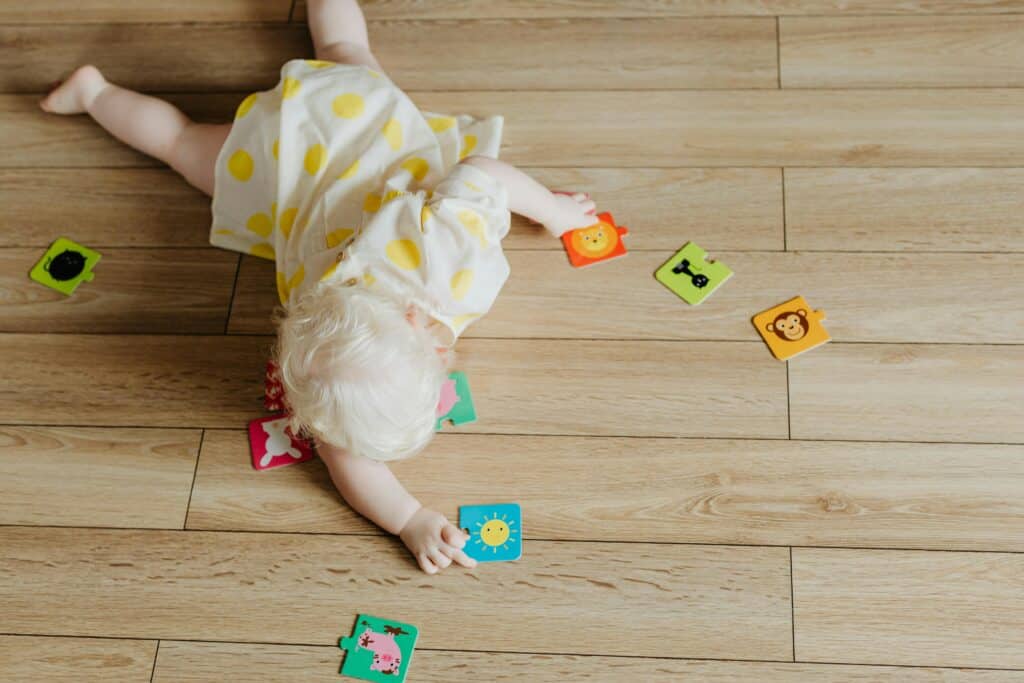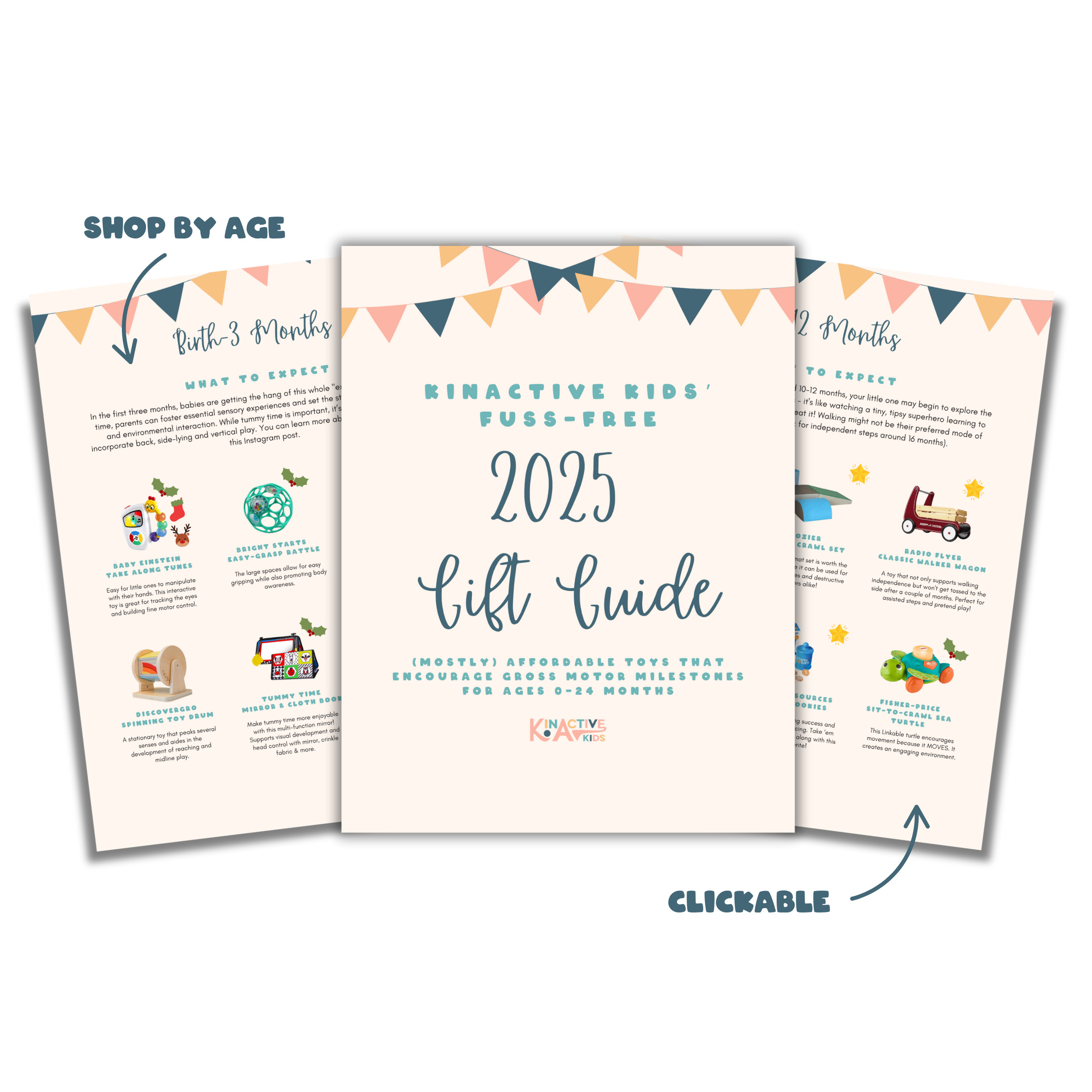7 Stages of Crawling: A Milestone-by-Milestone Guide for Parents


1. Tummy Time (0–3 Months)
Tummy time is where it all begins. During this stage, babies spend time on their stomachs to strengthen their neck, shoulders, and core muscles. As they lift their head and push up slightly with their arms, they build the foundational strength required for crawling.
Encourage tummy time daily by placing toys within arm’s reach or lying on the floor with your baby to keep them engaged.
2. Rolling Over (2–5 Months)
Rolling over is a key milestone in the stages of crawling, marking your baby’s first steps toward mobility. By shifting their weight and turning from back to front and vice versa, babies develop the coordination and flexibility essential for crawling.
If your baby hesitates to roll over, you can gently guide them or use a favorite toy to encourage movement and build their confidence.
3. Pushing Up on Hands (4–6 Months)
As your baby gains strength, they’ll begin pushing up on their hands while on their tummy. This stage develops upper body strength and teaches them to bear weight on their arms.
Mirrors or books placed just out of reach can encourage them to push up and reach forward, enhancing their range of motion.
4. Pivoting and Rocking (5–7 Months)
Around this time, babies start pivoting in circles on their stomachs and rocking back and forth on their hands and knees. Rocking is a sign that your child is preparing to crawl, as it mimics the movement pattern needed for hands-and-knees crawling.
Provide a soft play mat to support their knees and give them plenty of time to explore this movement.

5. Army Crawling (6–8 Months)
Before reaching traditional crawling, many babies go through army crawling, where they use their arms to pull themselves forward while dragging their belly. This early stage helps them build the strength and coordination necessary for full crawling.
To encourage your baby’s army crawling, place toys at various distances to motivate them to move forward. For more tips and guidance, check out our full post on Army Crawling in Infants.
6. Crawling on Hands and Knees (7–10 Months)
This is the classic crawling stage where babies coordinate opposite arms and legs to move efficiently. Crawling improves balance, cross-body coordination, and spatial awareness.
Offer open, safe spaces for practice and engage your baby by crawling alongside them to make it interactive.
7. Advanced Crawling and Transitioning (8–12 Months)
By this stage, babies may experiment with different crawling styles, like bear crawling (on hands and feet) or crab crawling (moving sideways). They’ll also use crawling to transition into sitting, kneeling, or pulling up to stand, setting the stage for walking.
Continue to cheer them on, create obstacle courses, and celebrate their growing independence!
Supporting Your Baby Through the Stages of Crawling
Every baby develops at their own pace, and not all babies crawl in the same way—or at all. Some may skip crawling altogether, moving straight to standing or walking. To promote healthy crawling habits:
- Dedicate time to supervised play on the floor.
- Provide engaging, safe environments with a variety of textures and toys.
- Use purposeful positioning techniques, such as encouraging them to look to both sides or placing toys opposite their preferred direction.
If you notice delays or asymmetries, consult your pediatrician or a developmental specialist for guidance.
For more tips and crawling activities, check out our Crawling Master Class!
Why Crawling Matters
Crawling isn’t just a milestone; it’s a developmental workout for your baby’s body and brain. This activity improves motor coordination, strengthens muscles, and enhances bilateral integration—important for later skills like writing and sports.
By understanding and supporting the stages of crawling, you set the stage for your baby’s continued growth and development. For more in-depth information, check out this resource from the American Academy of Pediatrics or explore motor milestones on Pathways.org.
Looking for Extra Assistance?
Looking for extra assistance as your baby progresses through the stages of crawling? Watching your little one reach each milestone is exciting, but every baby develops at their own pace. At KinActive Kids, we’re here to support you through every stage of your baby’s journey. If you notice any delays or asymmetries, don’t hesitate to reach out—we’re ready to help!
Whether you’re seeking professional guidance from home or need hands-on therapy support, we have options tailored to your needs:
- Take our Masterclass on Crawling – Ideal for parents who want expert advice in the comfort of their home.
- Book a Kamp – Perfect for families with children experiencing atypical development.
- Book a Virtual Consultation – Receive personalized guidance from our clinic.
Our services are designed to help your baby reach their full potential, offering everything from structured therapy sessions to simple tips you can implement at home. Contact us today to schedule a consultation, and remember to follow us on social media for more tips and insights on your baby’s development!



